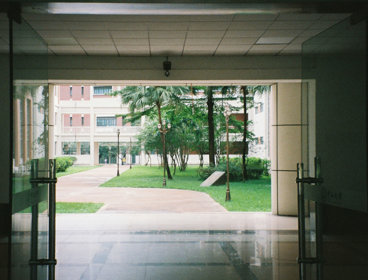Each month we are spotlighting recently published research from one of the Society’s leading international journals: Area, The Geographical Journal, Transactions of the Institute of British Geographers, and Geo: Geography and Environment. This month we're featuring a piece from The Geographical Journal exploring riverscapes in Aotearoa New Zealand.
In 2017, Aotearoa New Zealand announced globally unique legislation that granted the Whanganui river legal personhood, paving the way for a legal system that recognises the rights and life of every river. Against this backdrop, a team of researchers at the University of Auckland has been conducting the project which explores the Waimatā catchment in Gisborne.
Megan Thomas is a critical physical geographer whose PhD emerged from this project. Her research explores how we can live with rivers rather than trying to ‘manage’ them, using the Waimatā river as a case study. Her paper, co-authored with Billie Lythberg, Dan Hikuroa and Gary Brierley, has recently been published in The Geographical Journal. We spoke with Megan to find out more.
Critical physical geography and riverscapes
Across the Waimatā catchment, restoration groups are working hard to tackle environmental degradation around the river, but their efforts are failing. Stretching from the Waimatā's upper to lower catchments, groups are using riparian planting and ecological corridors to combat the impacts of the forestry industry. However, environmental issues such as erosion and sedimentation continue to plague the Waimatā.
Megan’s research explores why restoration efforts are not working. She told us about the value of critical physical geography for understanding this, and for identifying hopeful futures for our rivers.
Critical physical geography is the integration of the social and landscape sciences which we often divide into separate areas. Compared to the scientific study of the environment, we can learn how past processes have impacted current ones. Megan Thomas
Through understanding the histories of the current processes unfolding along rivers, critical physical geography enables us to envision new ways of living with rivers. Crucially, research in this field explores riverscapes from multiple perspectives, meaning both the ecological and social value of rivers can be captured and incorporated into restoration efforts.
This research tries to highlight that knowing a river or a landscape in multiple ways, whether this be scientifically or culturally, can allow us to actually reconnect with the landscape and protect what we think matters. Megan Thomas
Critical physical geography is central to exploring riverscapes and learning to live with them. It enables us to appreciate and protect the diverse importance of rivers, from their significance in physical landscapes and ecologies, to their centrality in human cultures and origin stories.
From the mountains to the sea
In this research, Megan and her co-authors centre three groups to whom the Waimatā is of importance: the forestry industry, restoration groups, and local Māori. The Māori community have a long history of occupation along the river, understanding rivers as their ancestors. The authors argue that restoration efforts aiming to combat the impacts of forestry are partly failing because they ignore holistic Māori worldviews.
Restoration efforts are piecemeal, operating in distinct catchment zones: the legacies of land separation carried out by nineteenth-century settler colonists. Disconnected restoration efforts fail to reflect the beliefs of local Māori who view themselves as inseparable from their environment. Megan and her co-authors argue that both the forestry industry and restoration efforts need to embrace these worldviews, understanding that activities occurring in one area of the river affect the entire Waimatā catchment.
There is an extensive Māori history of occupation along the river. Adopting the holistic lens through which they have viewed the environment could help to reduce forestry impacts.Megan Thomas
Critical physical geography encourages us to appreciate the impact of historical processes on contemporary ways of living alongside rivers. Along the Waimatā, historical land division influences contemporary restoration efforts and forestry practices. In centring the impact of the past on the present and futures of riverscapes, critical physical geography illuminates a way towards living with rivers. Rather than carving rivers up into distinct management zones, they should be understood by restoration groups as ‘living beings’ that flow from the mountains to the sea.
We can improve the already impressive restoration efforts by adopting the mountains to the sea approach, considering the catchment as a whole. Megan Thomas
This approach holds hope for minimising human impact along the Waimatā, opening pathways towards living with the river in social and natural harmony. These pathways urgently need to be followed. Around the world, as riverscapes are ever more impacted by the climate and biodiversity crises, our relationships to them are becoming increasingly difficult. News headlines across the globe tell stories of extreme floods, relentless droughts, and lifeless waterbodies.
To protect and restore our rivers in this changing world, we need to listen to Indigenous knowledges and engage with riverscapes holistically, from mountains to seas.
Next steps
Megan is in the process of completing her PhD exploring the anthropocene landscape of the Waimatā catchment. She is currently working on two more journal papers. Megan’s next paper is concerned with how emotional connections fostered through viewing the Waimatā in different ways can encourage social resilience.
Shifting to riverine resilience, her other paper assesses the geomorphic health of the river, exploring how it has eroded and deposited sediment following Cyclone Gabrielle.
Problematising the Anthropocene article
This research spotlight article was written by Safia Bailey (Cardiff University).



